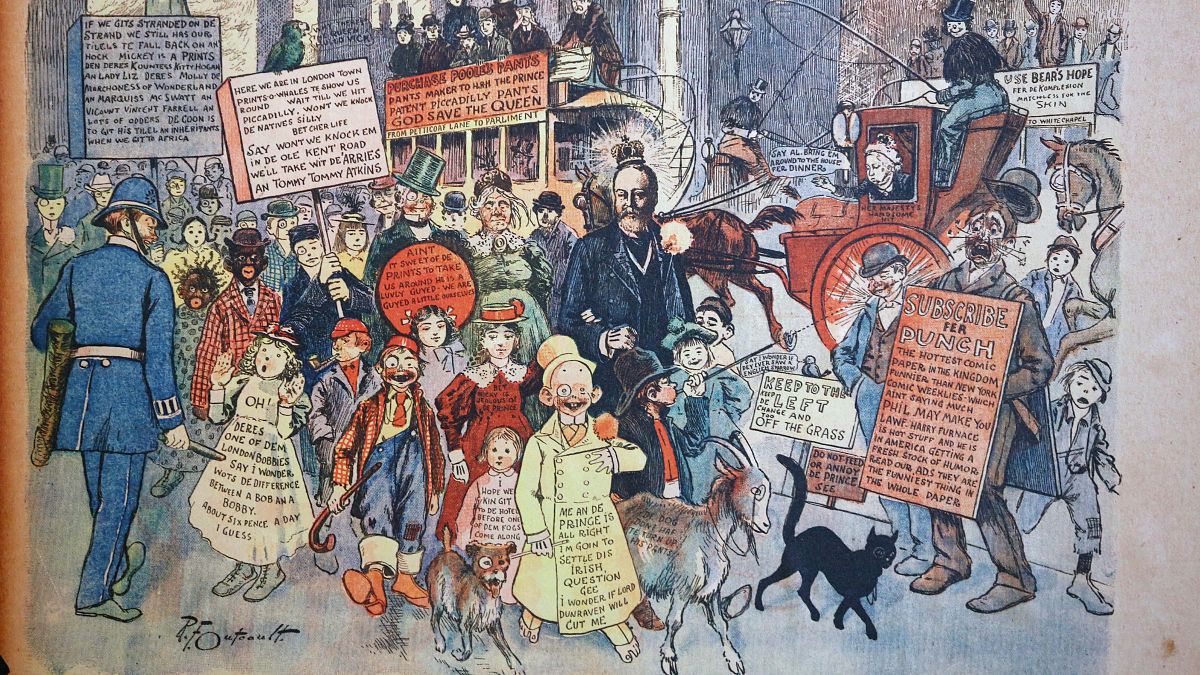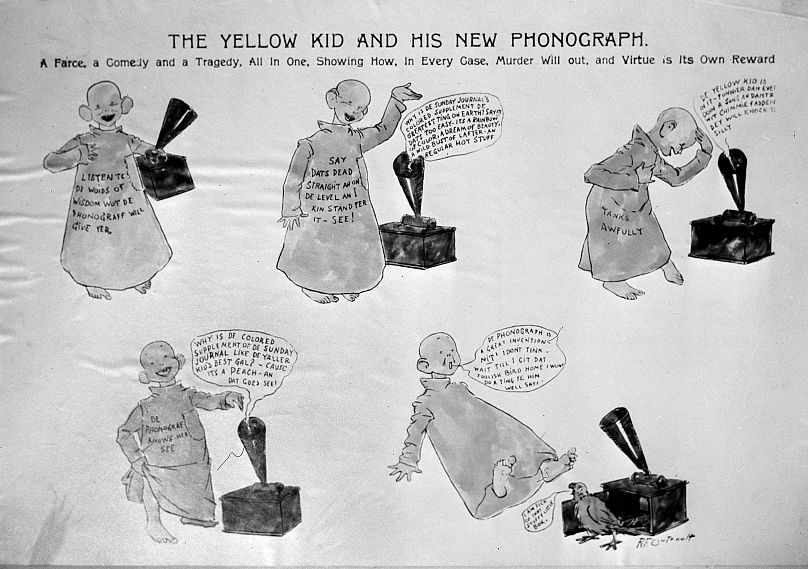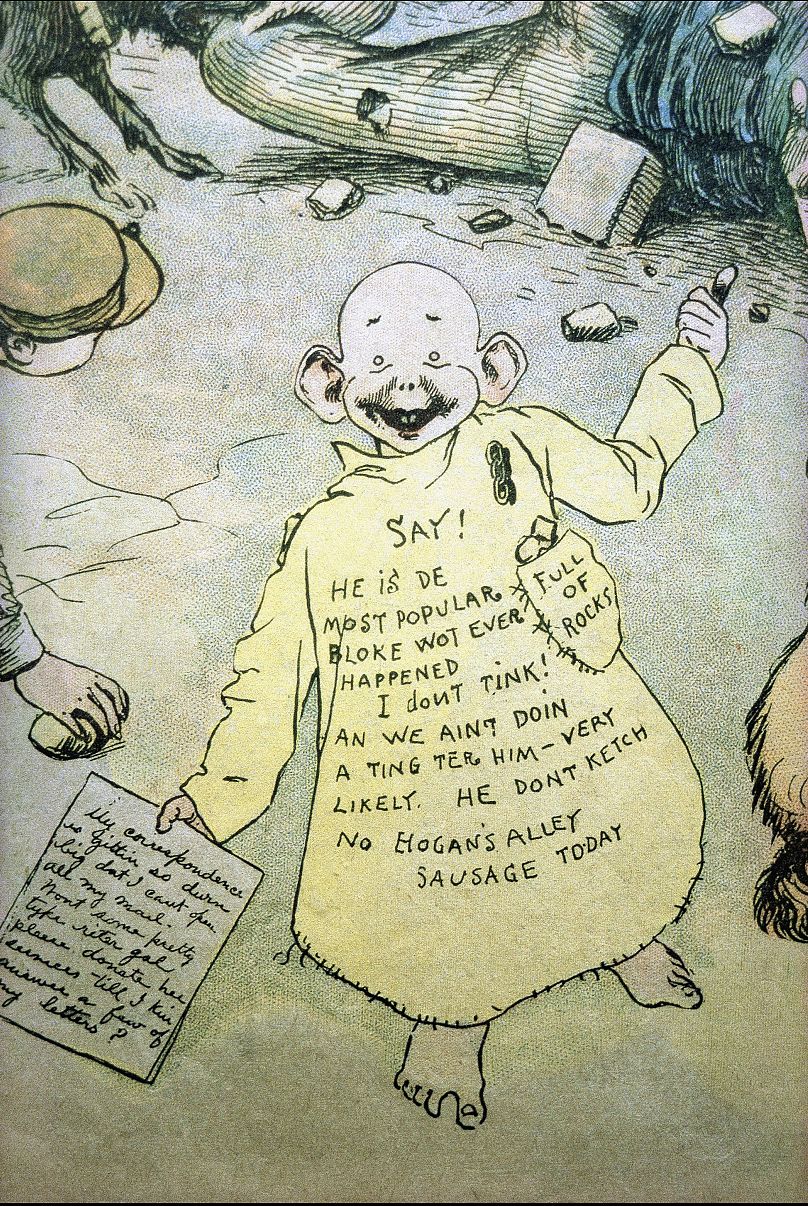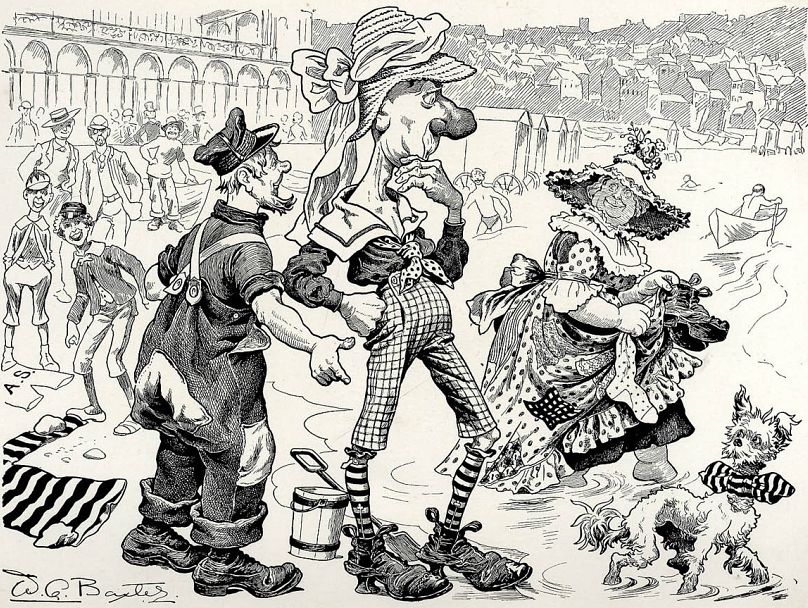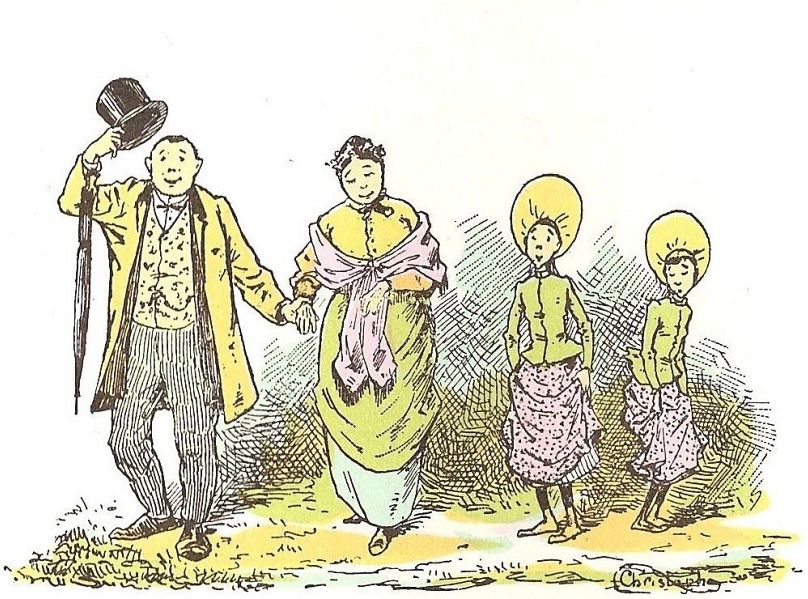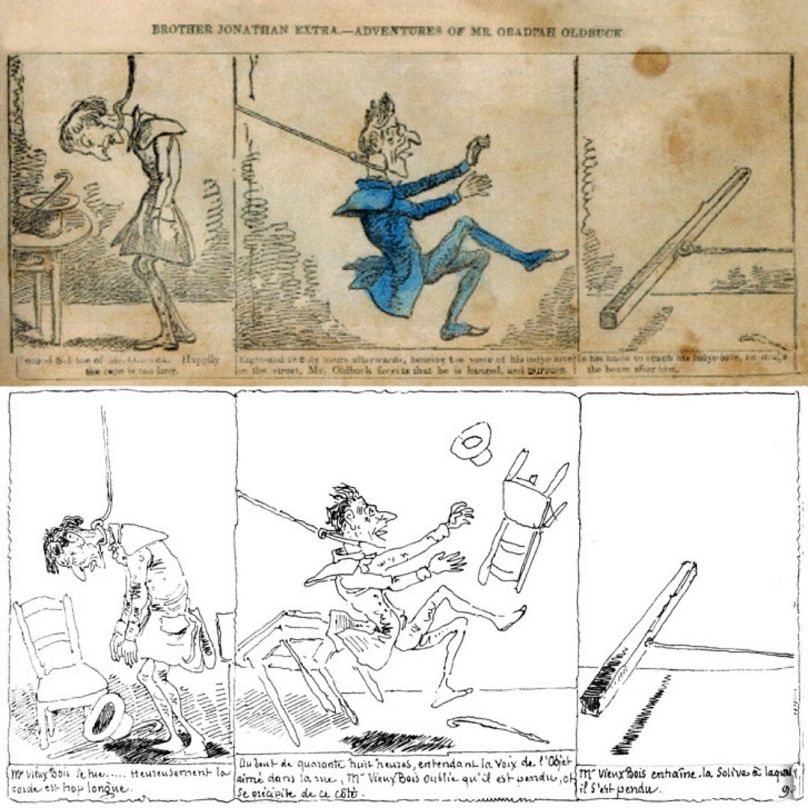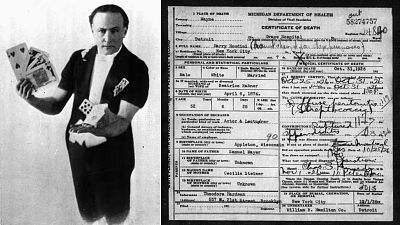18 October 1896: The New York Journal published the first “Yellow Kid” comic, often cited as the first regular, ongoing newspaper comic strip.
At the turn of the 20th century in the United States, in the heat of a vicious newspaper war between tycoons Joseph Pulitzer and William Randolph Hearst, a new art form burst onto the scene: the newspaper comic strip.
As Hearst and Pulitzer tried to one-up each other with ever more sensationalist headlines, a little kid with a shaved head, buck teeth and a yellow nightgown began appearing on the pages of Pulitzer’s New York World.
The “Yellow Kid,” as he was called, was first created by cartoonist Richard Outcault in 1895, when Outcault was on staff at the World.
The character was an Irish tenement hooligan who made his way across New York, and the comic was full of slapstick humour and social commentary.
Readers adored him. They rushed out to buy every issue of the newspaper when Yellow Kid was in it, and the World started publishing Yellow Kid cartoons several times a week.
That got Hearst’s attention, who noticed the cartoon was driving sales of his competitor. He reached deep into his pocket and offered Outcault a large sum of money to jump ship and join his paper.
On 18 October 1896, “The Yellow Kid” was first published in the New York Journal, becoming a regular and ongoing newspaper cartoon – now often cited as the first newspaper comic strip in the world.
His image became so omnipresent that the Yellow Kid became the mascot for the era’s signature tabloid journalism, driving a substantial bump in sales for the Journal and unwittingly inspiring the term “yellow journalism”.
But was it really the world’s first newspaper comic strip? Many experts say that’s an oversimplification.
Cartoons vs. Comic strips
“As with most supposed ‘firsts’, the waters are far murkier than busy reporters would like,” US cartoon historian Allan Holtz told Euronews Culture in an email.
“The only really indisputable title given to the Yellow Kid, or more properly Hogan's Alley starring the Yellow Kid, was the first highly successful newspaper cartoon series,” the author of the book "American Newspaper Comics" continued.
Holtz’ misgivings stem from the defining characteristics of comic strips – they are multi-panelled cartoons that tell a story, and are often published in newspapers or magazines.
The Yellow Kid rarely used the multi-panel format, Holtz said. It usually opted for a single panel, which would make it a cartoon, not a comic strip.
In Europe, there were many cartoons that predated the Yellow Kid, but Holtz says they came from magazines and books, not newspapers.
Some of the examples include the comic strip “Ally Sloper” from the UK, which was first published in 1867 in the British humour magazine Judy.
The fictional character could be found “sloping” through alleys to avoid his landlord and other creditors to whom he owed money.
In France, “La Famille Fenouillard” made its debut in 1889 on the pages of a weekly magazine targeting bourgeois families called “Le Journal de la Jeunesse”.
The satirical cartoon followed the bourgeois family’s adventures as they travel around the world.
But the godfather of all of these is considered to be the Swiss comic called “Monsieur Vieux Bois” which was first published in a book in 1832.
It was adapted to English – without its author’s permission, it would seem – as “The Adventures of Mr. Obadiah Oldbuck” and made its way to the United States in 1849 in a book by a New York publisher.
Pop culture legacy
Regardless of which cartoon was actually the original comic strip, what’s certain is that the Yellow Kid was a cultural phenomenon, setting in motion a passion for the “funny papers” in the US that’s had a lasting impact on pop culture.
By 1908, the comic strip became a daily feature in the San Francisco Chronicle and papers across the country were coming up with new stories to lure readers into buying copies.
Some of the most famous comic strips – like Charles Schulz’ “Peanuts,” Jim Davis’ “Garfield” or Bill Watterson’s “Calvin & Hobbes” – have moved beyond the page, into movies and TV shows and merchandise, becoming cultural touchstones in their own right.
In Europe, there are theme parks, statues and museums dedicated to comic heroes like France's "Asterix and Obelisk" and Belgium's "The Smurfs".
Some of today's newest and most popular comic strips can be found online today, with webcomics like “xkcd” and “Saturday Morning Breakfast Cereal” attracting millions of readers.
